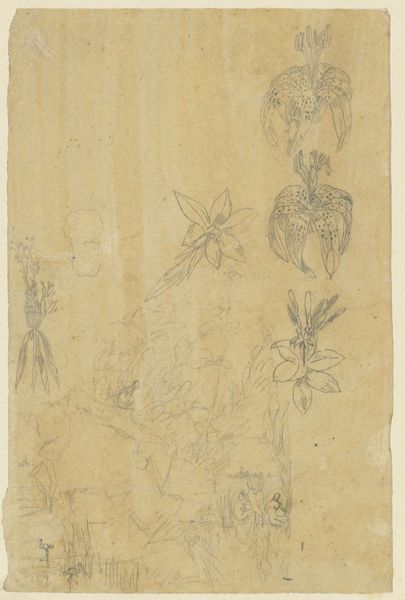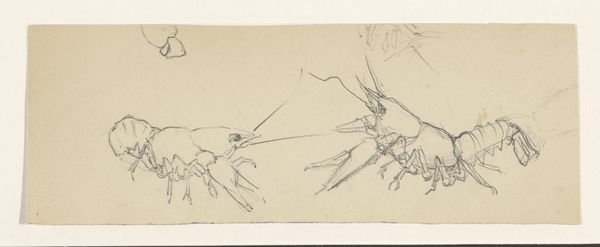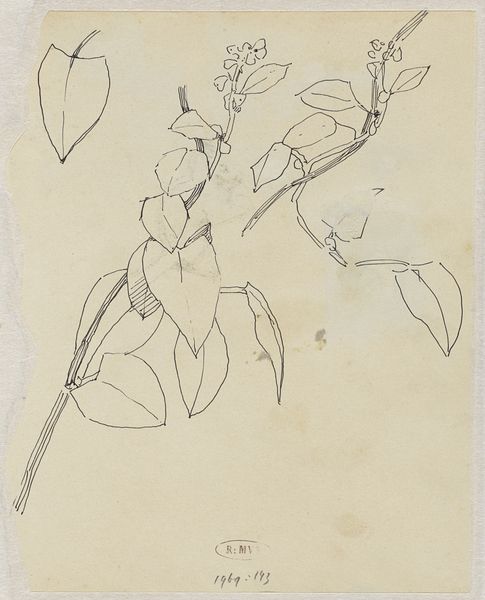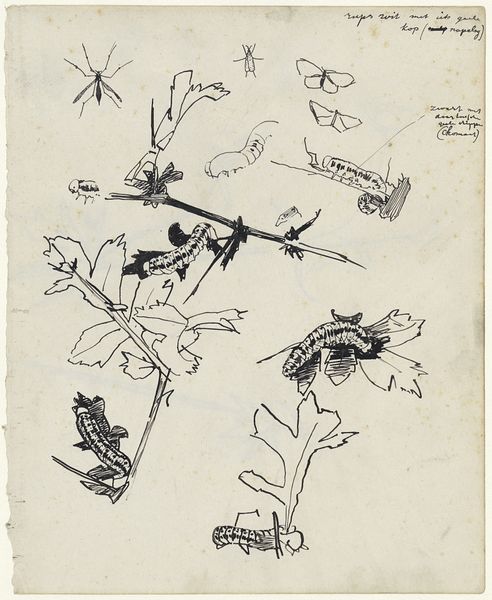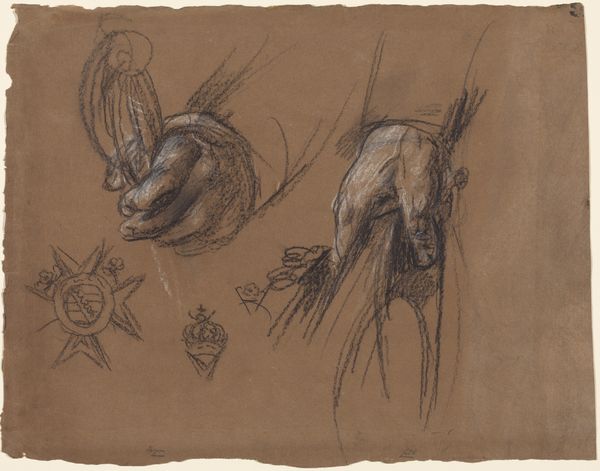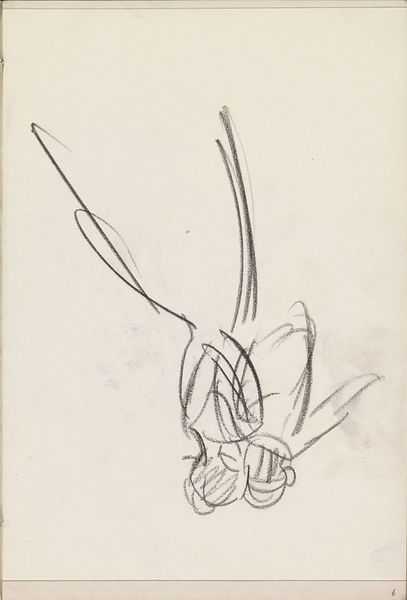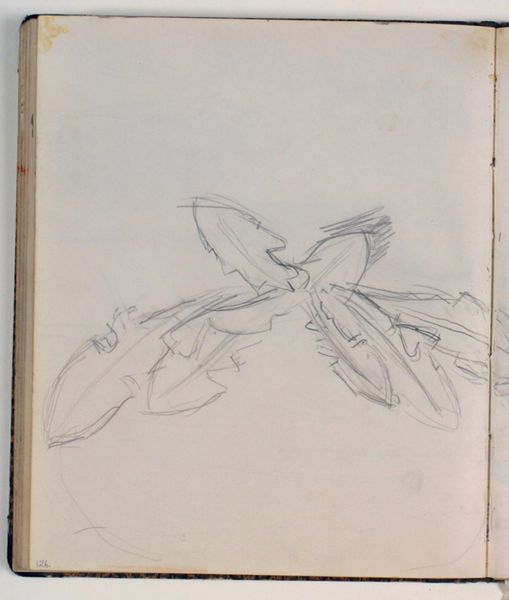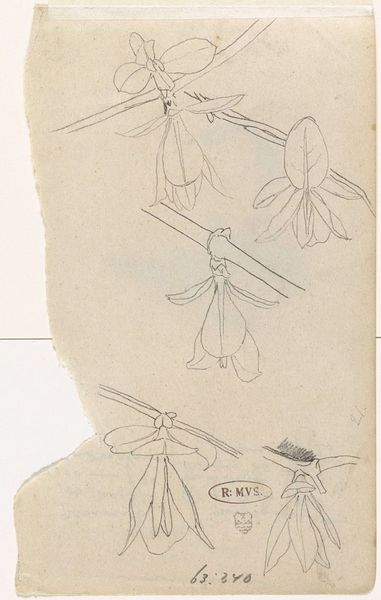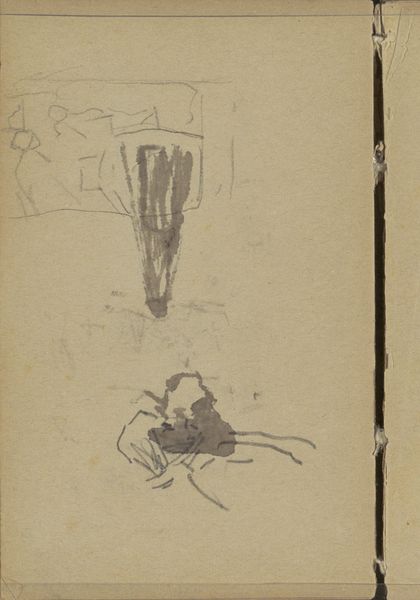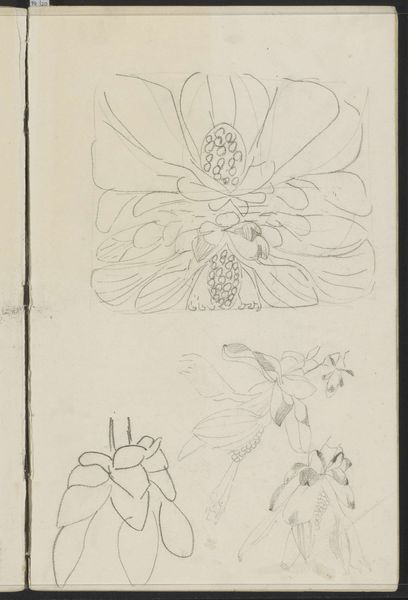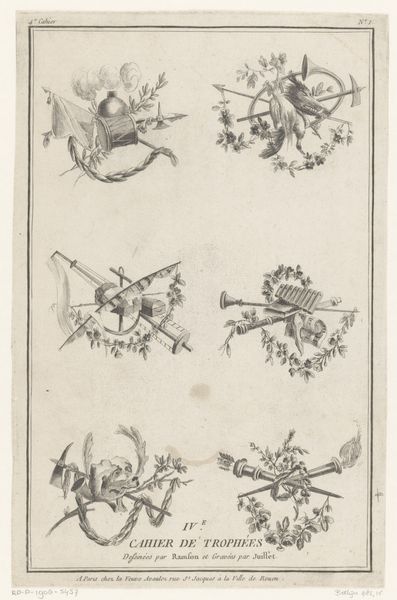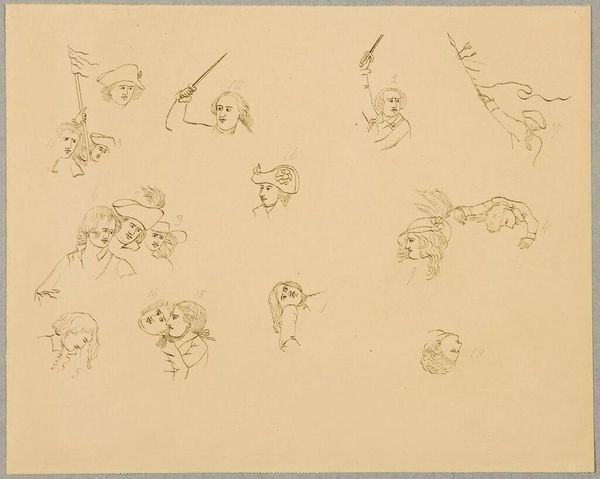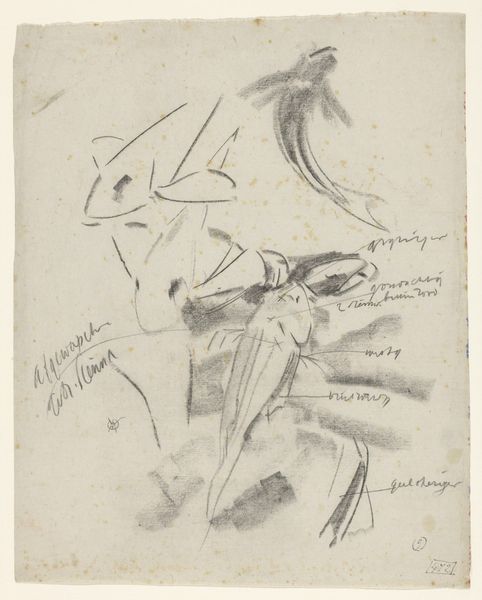
#
toned paper
#
light pencil work
#
blue ink drawing
#
etching
#
personal sketchbook
#
ink drawing experimentation
#
ink colored
#
sketchbook drawing
#
watercolour illustration
#
sketchbook art
Dimensions: height 114 mm, width 70 mm
Copyright: Rijks Museum: Open Domain
Curator: I find myself immediately captivated by this sheet of spider studies. It’s fascinating how simple pencil lines can bring these creatures to life. Editor: You've anticipated my own sentiments about this drawing. Looking at “Studies van spinnen” by Theo Nieuwenhuis, I see an echo of societal anxieties surrounding gender, especially concerning depictions of women as predatory or 'spider-like' figures in the late 19th and early 20th centuries. Given that this artwork was created between 1876 and 1951, we could consider how prevailing stereotypes about femininity might have subconsciously informed Nieuwenhuis' representations. Curator: Huh. I mostly see a cool exploration of form. Did you know the sheet is actually done on toned paper, which makes the delicate pencil work even more visible? Look closely, you'll notice he's not just sketching; he's experimenting with light and shadow, suggesting the spider's delicate structure. Editor: True. And the act of sketching itself--being the spontaneous nature of the artwork found in a personal sketchbook—it opens up inquiries of how artists, specifically in this time, worked within their studio. But I keep coming back to those inherent, pervasive gender dynamics. Do you suppose it’s coincidental that spiders—often symbols of creation, patience, but also entrapment—are his subject? Curator: Well, maybe he just liked spiders! He seemed to be capturing a realistic likeness of several different species here. But it also calls attention to nature—and natural sciences—as inspiration, even when considering their potential to intersect with the existing patriarchal power dynamics. Editor: Precisely. In connecting with philosophy, this makes me question how art and nature play roles of imitation to life; how they work together and diverge apart. Curator: In any case, whatever drew Theo to study these tiny creatures, he captured something of their essence—their fragility, their watchfulness. It gives us a peek into nature but more personally, also into the working process and eye of the artist. Editor: It’s amazing to see how much historical and cultural charge even a seemingly simple sketch can carry. It highlights the importance of contextualizing artistic expressions with sensitivity, understanding that any kind of artistic output can never fully escape socio-cultural environments and gender biases of its time. Curator: Spiders, nature, and art—who knew they held so much in their web?
Comments
No comments
Be the first to comment and join the conversation on the ultimate creative platform.

